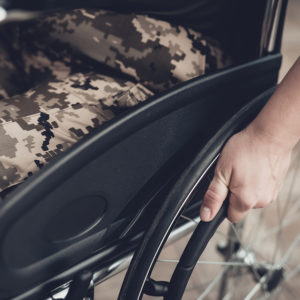The United States will face an epic worker crisis if its policies and workplaces do not adjust to the needs of the disability community.
While most headlines focus on frustrated employers who are struggling to keep staff on their payroll, they completely ignore a huge situation that the disability community has been warning about since the pandemic began. COVID-19 is a mass disability event.
My colleagues and I at the Center for American Progress recently published a report examining the Bureau of Labor Statistics numbers, which show that there are 1.2 million more disabled people in the United States in 2021 than the year prior. Whether from long COVID or improper care of chronic illnesses, the United States has a massive situation on its hands — and businesses and governments seem ill prepared to adapt appropriately.
Prior to the pandemic, disabled workers already faced significant barriers to obtaining and maintaining employment. As a disabled person and a former vocational rehabilitation counselor, I know firsthand how structural ableism — systematic discrimination and/or social prejudice of disabled people or people perceived as disabled — affects a person’s ability to work.
Disabled job applicants may not be able to access job postings because they are on inaccessible web platforms or posted in physically inaccessible locations. They may run into issues if the interview is located in an inaccessible building or are unable to find accessible transportation. If the person is asked to interview for a position, they may be perceived as incompetent due to overt or implicit bias.
Once obtaining employment, disabled people face a new set of hurdles. The workplace may be inaccessible. For example, a building may not have accessible bathrooms or may have open work floors that make it hard for individuals to focus. Individuals may have to not only perform their own work duties but also expend energy working with HR to gain the accommodations that they need. As many employers push for in-person work, individuals who are in the high-risk or immunocompromised status may be pushed into unsafe environments, risk being let go, or stalled in their career.
Governments and employers can play a key role in helping disabled people, including individuals with new disabilities, gain employment and/or economic stability. Employers must better understand the importance of workplace accommodations, as this will help them access a larger pool of talented individuals in the workforce.
Many employers mistakenly believe that accommodations are expensive; however, statistics show that 56 percent of workplace accommodations place no actual cost on employers. The rest cost an average of $500. By adopting more flexible workplace policies and accommodating disabled workers, employers can significantly increase their pool of candidates.
Throughout the pandemic, many workplaces have demonstrated their adaptability as they shifted to remote work. Employers must continue to stay flexible and provide the appropriate accommodations, even as COVID-19 wanes and case rates decrease.
Private business and government partnerships can also play a large role in helping disabled individuals obtain employment. The Division of Vocational Rehabilitation is one of the largest vocational programs in the country, dedicated to connecting disabled people with work opportunities. The federal government must do a complete review of the program to help decrease caseloads and increase counselor retention. They should also do more to help states communicate how businesses can recruit from the program.
The federal government must also better understand the newly disabled population. There is still not enough known about long COVID and its continuous effect on our economy and workplaces. People with long COVID symptoms and other disability groups have pushed the Centers for Disease Control and Prevention and National Institute of Health to release more data to better help understand long COVID. It is also unclear exactly how overloaded hospitals have affected the trajectory of chronic illnesses. Yet this information could help illuminate for governments the fact that COVID is not just about mass death, but about mass disability.
The CDC recently released a new measure for COVID-19 Community Levels that incorporates hospitalization rates and provides new controversial recommendations for precautions, including mask guidance. CDC guidance must be more straightforward and provide protection for the most vulnerable, ensuring disabled workers and medical and care providers the ability to work in safe environments. Masking off-ramps need to rely more heavily on transmission and disability rates versus hospitalization rates. This will help employers and governments more quickly adjust to COVID-19 surges.
Last, Congress must push for improvements to America’s social safety net programs. From eliminating asset limits and sub-minimum wages to providing universal access to paid leave to care for oneself and others, these improvements can ensure disabled people are able to stabilize medical conditions and would foster their economic stability. This can make it easier for disabled people to focus on their return to the workforce and allow them to build careers.
The United States has many tools at its disposal, yet it is clearly ignoring the needs, skills and potential of the disabled workforce. As disabled people’s employment rate lags behind that of their non-disabled peers, employers will continue to struggle to find capable workers, placing another strain on our already tight labor market and declining social safety net programs. With disability rates on the rise, policymakers and employers must act now to foster an equitable economic recovery that doesn’t leave behind the 1.2 million more disabled Americans in the wake of the pandemic.

